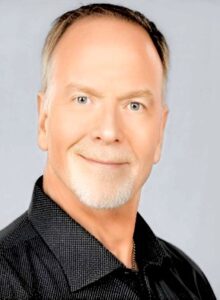
by John Oglesby
In the third installment, we review lessons learned by the other bidders. We explore how a few minor tweaks would have led to a different winner. It is amazing how close this race was. The names and some specifics have been retained to protect and support the process and our industry.
The recap: You received an RFP (Request for Proposal) and it is by invitation only. It reads that this email and attachments are the RFP. Please send one to three representatives to this address, at this time, for these two garages, surface lots, on-street, and a sports venue will be a unique opportunity.
What were the missteps that prevented the other seven bidders from winning? Due to an unwillingness or inability to provide all of the equipment and use-case needs (PARCs, on-street, handhelds for large adjacent retailers during events, event P.O.S. integration, a financing option, and enforcement interface) the magnificent seven became four.
The incumbent bidder had the home court advantage. There also was a parking operator that went live just about the time Covid hit and wasn’t fully operational. The biggest challenge: lack of communication with their client. The client remained the one constant, and told us that they reached out to the incumbent operator and technology provider (who kept billing SaaS fees for a system that was turned off), and it was non-responsive when equipment became damaged (not the provider’s fault) and not in use.
Despite these issues (which were significant), we convinced the client to allow them to submit a proposal (they are a very large and successful equipment provider). When they submitted their bid, it was surprising to find that with almost one-half of the campus equipment needed already on-site and with one exception, in working order, they were the second highest bidder.
One of the most affordable respondents brought a special event specialist to the presentation. He was a strong addition, and clearly would have been a viable contender. The provider lead did a great job in his presentation. The challenge was that he had not been part of the proposal process, and none of his expertise was in their proposal. His insights were intriguing, and he almost pulled out the win at the table.
This provider was also an operator and continued to press and express a preference for a gateless operation. They also politely expressed their desire to be the operator (but were willing to sell their equipment if not selected as the operator). This was impressive as the new operator (which they were aware of) was part of the evaluation team. They did a very good job walking a “tightrope,” and their price was very competitive. In the end, they finished a close second.
The final bidder was well positioned for the location. They were based only 90 minutes away and a friend and former colleague of the consultant. They had tremendous market presence in the large city 90 minutes away, and an increasing and very happy respectable presence in the growing market of the location. The presenter did a solid job, answered all questions except the one that was never asked. Where was the PARC provider representative? They were unsuccessful for two primary reasons: price, but more importantly the proposal was from the distributor, not the PARC provider.
The bidder came alone, and had no representative from the PARC provider. The PARC provider was recently acquired, and the evaluation team felt confused, concerned and a bit disrespected that there was no show of support from the distributor bidder. The evaluation team had questions about the viability of the company given the purchase by an entity with other successful PARC lines. Would their selection still be viable in the future? The final challenge: they were the highest bidder by 30 percent.
Relationships are very important in this industry. Business is business. The team that won didn’t have a strong current connection to the consultant, operator, or client. They did have a strong showing at a recent trade show that caught the interest of the consultant, and thus were added to the provider list.
The installation is well underway, and the location is expected to open in August, thanks to all of the bumps we have experienced in 2023.
Each of the finalist had a legitimate shot with this location, the goal of this consultant. Any of the finalists would have done a solid job. The client has referred and recommended our team to three additional locations and those RFPs began in July. Best of luck bidders. Read the RFP (if there is one), write like you are the client sharing your challenges, and be the bidder that provides solutions.
The Next Non-RFP should see even better responses and results!
Best of luck!
This article originally appeared in the August, 2023 issue of Parking Today.
https://www.parkingtoday.com/articledetails.php?id=3797&t=when-is-an-rfp-not-an-rfp-part-3

Comments are closed